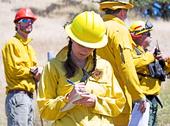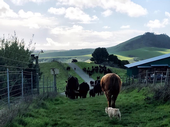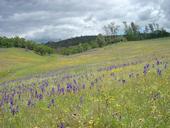- Author: Saoimanu Sope

Nearly 200 residents trained in past seven years by program, a part of UC Environmental Stewards
On one of her darkest days, Tammah Watts stood in front of her kitchen sink to fill a pitcher of water. Outside of her window, the San Marcos resident noticed a flutter in the distance. She spotted a small yellow bird emerge from the tree and her eyes grew in admiration.
Bird-watching from her kitchen window became an escape for Watts while she was temporarily homebound after a surgery. It's where she found connection beyond the interior space of her home.
“I started noticing other birds that had always been there. The yard didn't change, but my mind...
- Author: Kathryn Low

University of California Cooperative Extension has recently expanded their team of fire advisors and staff. This new group of UCCE fire professionals is interested in learning about the concerns of the communities that UCCE serves, as well as the natural resource professionals already working to address these issues.
Results from this survey will enhance the team's ability to partner with residents, landowners, agencies, academics, and other organizations to reduce California's vulnerability to wildfires. These new advisors will also share survey results with UCCE colleagues throughout the state, who already...
- Author: Liana Wolfe

California has faced many droughts in the past, and we have always been able to manage them to some extent. However, with climate change creating a new hydrologic regime with more precipitation falling as rain than snow and higher evaporative demand, the state may be more at risk for drought now than in year's past according to Safeeq Khan, Cooperative Extension Specialist in Water and Watershed Sciences at the University of California Division of Agriculture and Natural Resource. Presently, the state is experiencing one of the driest years on record with only half of its average annual snow pack this past winter and appears to be heading towards another drought. Even more concerning is that this year's water and snow...
- Author: Diane Nelson

“When first-generation ranchers succeed, we all succeed,” says Kate Munden-Dixon, a Ph.D. student...

Native wildflowers in California are losing species diversity after multiple years of drier winters, according to a study from the University of California, Davis, which provides the first direct evidence of climate change impacts in the state's grassland communities.
The study, covered in TIME, LA Times, and elsewhere, was published in the journal Proceedings of the National...



